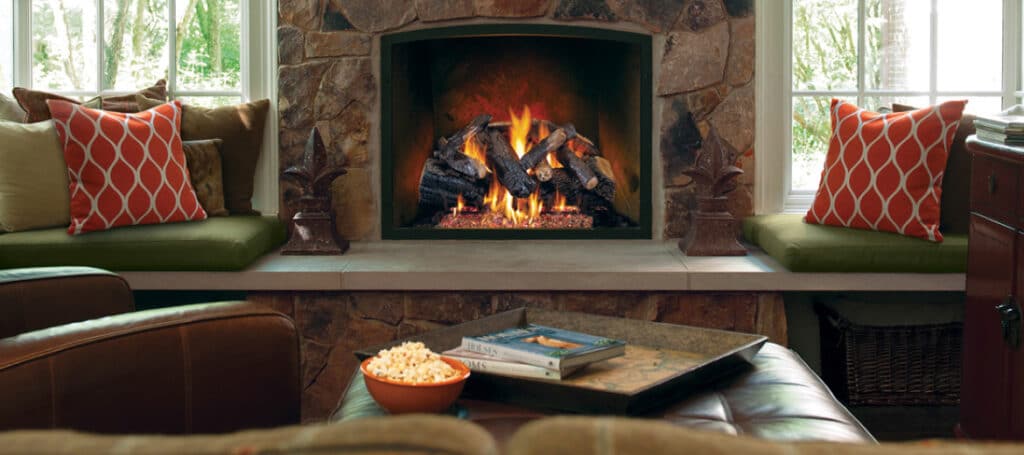What To Know About Converting Wood Fireplace to Gas Logs

Don’t get us wrong, wood-burning fireplaces are great! They offer natural beauty and distinct aromas that set the Holiday mood, but they also come with their share of stress. Between restocking firewood, sweeping ash in and around the fireplace, and waiting for logs to burn out, you may find yourself wanting to convert your wood fireplace to gas logs.
If you’re considering converting your traditional fireplace to gas logs, this article will explain what you need to know before making the switch.
1 – Gas Logs Go Inside Traditional, Wood-Burning Fireplaces
While some exceptions exist to this rule, gas logs are generally not designed for fireplaces that already burn gas. Gas logs are designed to be placed into traditional, wood-burning fireplaces. If you have an existing gas fireplace that you’re not satisfied with, contact us about other ways you might be able to transform your existing gas fireplace.
2 – Masonry Fireplaces Provide the Most Options
We sell two types of gas logs: Vented and Vent-free Gas Logs. The type of wood-burning fireplace you have will dictate the type of gas logs you can install.
Vented Gas Logs are the most popular type of gas log that we install. They must be used in a wood-burning fireplace with a masonry or metal chimney pipe. You’ll want to ensure the damper is open when you use your vented gas logs.
Vent-free Gas Logs do not require a chimney or flue to function. However, they must be used in masonry, wood-burning, or metal firebox specifically engineered to work with ventless gas logs. Check your installation manual or contact us to determine which type of gas logs you need depending on your fireplace.
3 – Space Around Your Gas Logs Is a Must
Gas logs require air circulation to vent properly. It’s good practice to go a size down if you’re torn on what size gas logs to purchase. Different systems, like those with a pilot light, may require more clearance than others. You must measure the entire gas log system, not just the logs’ dimensions.
Click here for help measuring what size gas logs to purchase.
4 – You’ll Need to Upgrade Your Log Lighter
Before switching your traditional fireplace to gas logs, you’ll need to determine whether you have a gas line that runs into your fireplace. If no gas line is found, you’ll need to run a new gas line to your fireplace.
The installation will be much easier if you already have a gas line that runs to your fireplace with a log lighter. The only upgrade you’ll need to make in this case is to replace the log lighter with a gas log burner system. The Mad Hatter can perform this swap for you at the time of installation.
5 – You May Need a Permit
Because gas lines are involved, converting your traditional fireplace to gas logs may not be as simple as one may think. You may be required to take out a permit before doing so. Check with your local building codes to see if there are any restrictions about the type of gas logs you can install.
6 – Chimney Inspections Are Still Necessary
Installing gas logs is not a reason to no longer have your chimney health inspected. Vented gas logs will still produce smoke and soot. Birds and mammals can still enter your chimney and make nests. Over time, your chimney may also suffer cracks and leaks, allowing gas or heat to flow into your home. Annual chimney inspections with The Mad Hatter will ensure that your fireplace and chimney are equipped to handle your gas logs. Contact us with any questions about converting your wood-burning fireplace to gas logs.
